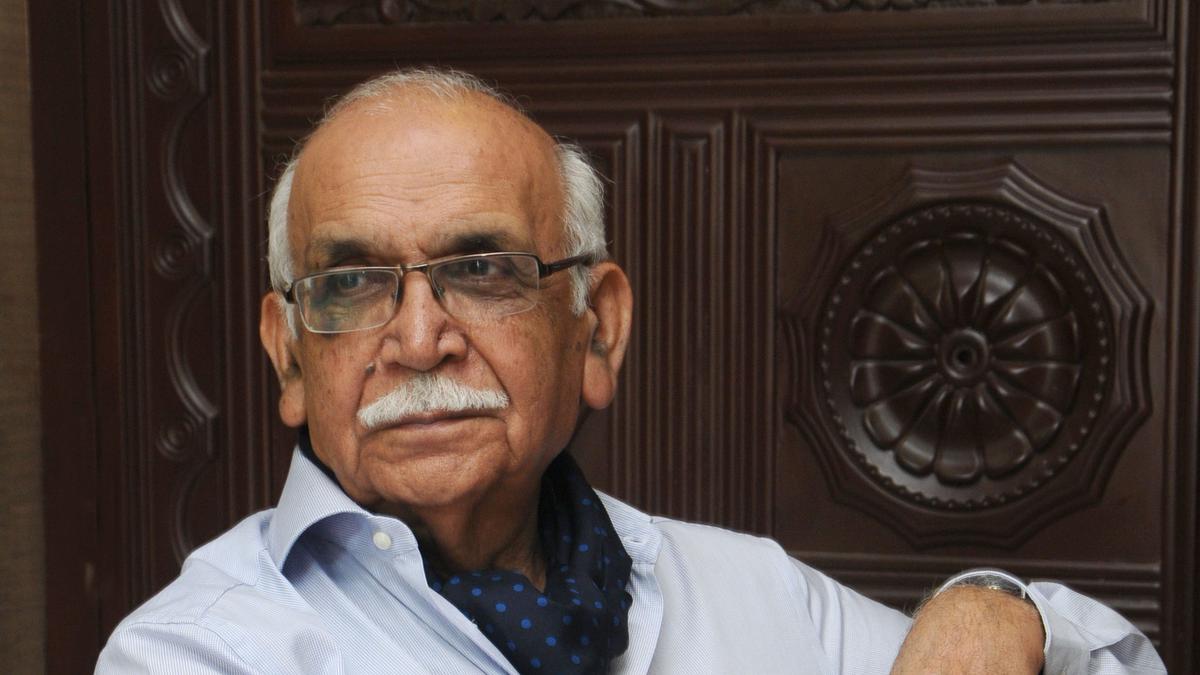
B.N. Goswamy dug into art history to give obscure artistes an identity
The Hindu
Remembering the master of miniature painting
He trod gently but had sharp eyes that could see things fading into darkness and oblivion. His sole purpose was to reclaim the tangible works of art that evaded historical continuities and give them a place in the great hall of Indian art history. His name was Prof. B. N. Goswamy, author of 25 art history volumes, an inimitable feat achieved by sheer devotion to the subject. Interestingly, his last book was about cats in Indian art, creatures that have gentle feet and sharp eyes. Prof.Goswamy exuded the same witticism and aloofness of these furry beings in his narratives about them. He was careful and caring — that’s why he quoted Mir Taqui Mir, the 18th Century poet, while talking about Indian art, ‘Breathe gently here for it is a brittle world you and I are about to enter’.
Prof Goswamy inherited his classy lifestyle and erudition during the tumultuous years when colonial era was drawing to an end, and retained it without compromise even after India gained Independence. He was an IAS officer for a few years and left his administrative skills behind to take up further research in Indian art, especially Pahari and Sikh art. His curiosity moved from recognising the lesser-known manuscripts and illuminations from the regional varieties of Indian miniature traditions and writing volumes about them, to the identification of artists who did signature style works in the courts of northern provinces since the Mughal period. He pored over innumerable volumes maintained by temple priests whose relentless documentations of donors in cash, kind and art, without losing the finer details such as the painters’ names, those of the donors and witnesses under certain chieftains and kings, and brought out volumes such as Pahari Masters: Court Painters of Northern India, Nainsukh of Guler: A Great Indian Painter from a Small Hill State, Manaku of Guler: the Life and Work of Another Great Indian Painter from a Small Hill State.
I met Prof Goswamy in 2012, when I was invited by the Chandigarh Lalit Kala Akademi to deliver an illustrated lecture. To my surprise, Prof Goswamy sat in the front row and listened to my rather lengthy presentation of over an hour and a half. After the lecture, he shook hands with me and said he enjoyed looking at the contemporary works of art that were detailed in my presentation.
Reading B. N. Goswamy has always been a pleasurable thing. His volumes are written in chaste English but never pretentious or deliberately tedious and complex. He never encumbered his writing with unnecessary jargon. He could transport both an art history enthusiast and a general reader to the layers of Indian art traditions that prevailed in the northern provinces of our country. He had this theatrical flourish in his presentations, which often concluded with an image where Lord Krishna was presented in an absent form, through a blooming tree.
Prof Goswamy always reminded me of the late painter Jehangir Sabawala — both of them exuded a sense of Victorian elegance. While Sabawala was aloof by nature (maybe, he was accessible to his friends, galleries, collectors and dealers), Prof Goswamy remained accessible to students and scholars alike, but never made himself a populist. He stuck to his methodology and writing style and did not traverse the realm of contemporary art (except for once) as some art historians specialising in 19th Century or earlier centuries tend to do. Prof Goswamy never fell into that fallacy.
Brijinder Nath Goswamy, that was his full name. I never knew about it till recently. I was reading his book The Indian Cat, his last work on art history, approached through a different trajectory, where he picked up a set of Indian traditional works of art where cats are depicted as a side character or a predominant one. In the book, one of his friends calls him ‘Brij’ and I was curious. Like the book revealed another side of Goswamy, it also revealed to me that his name was Brijinder Nath Goswamy and that his close friends called him Brij.
There are two sides to an individual’s personality — one for the outside world and another which is personal. So how did the world perceive Prof Goswamy? As a meticulous art historian, always looking for the lost name of an artist and giving him his due acknowledgement in Indian art history. A delayed justice but what a justice!











